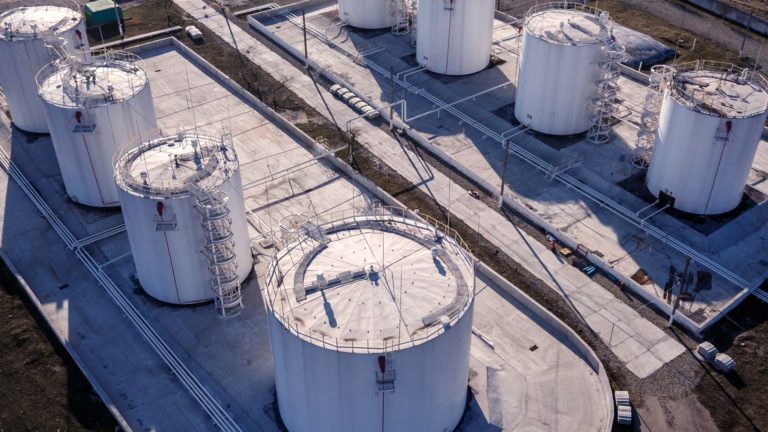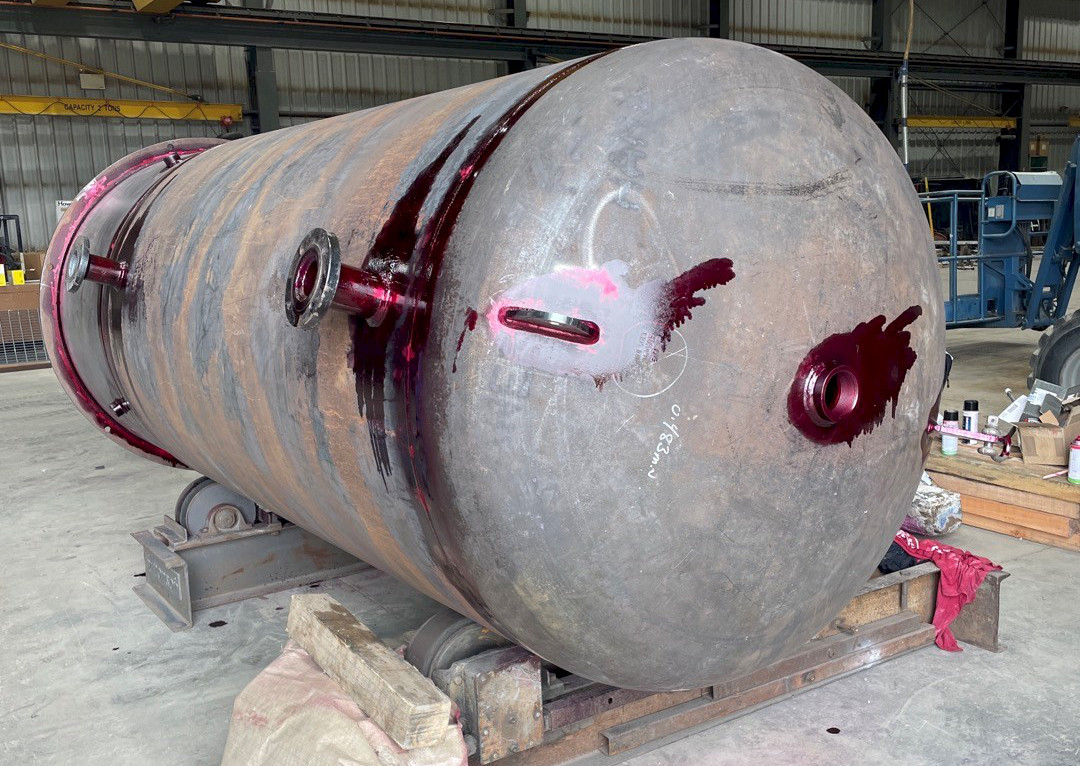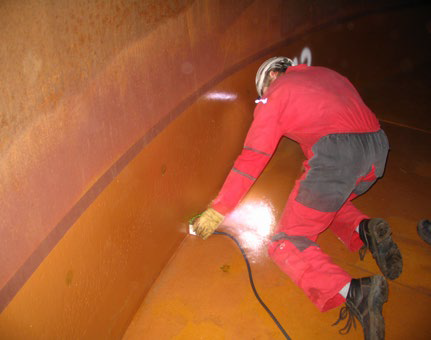Tank Welding Inspection: Guaranteeing Long-Term Resilience and Safety
Wiki Article
Comprehensive Overview to Effective Tank Welding Assessment Techniques and Best Practices for Top Quality Guarantee
In the realm of storage tank welding, rigorous evaluation methods are extremely important for protecting structural honesty and ensuring compliance with sector laws. As we check out these vital components, it becomes clear that an aggressive assessment technique is not simply valuable, however important for functional success in environments dealing with harmful materials.Significance of Tank Welding Inspection

Container welding assessment serves as a preventative step, recognizing prospective flaws such as cracks, porosity, or incorrect joint penetration prior to they escalate into major concerns. Routine evaluations not only conform with sector regulations and requirements yet also boost the long life of the tanks, decreasing the need for costly repairs or replacements.

Visual Assessment Strategies
Using systematic aesthetic assessment methods is crucial for evaluating the quality and honesty of welded joints in storage tanks. This method functions as the initial line of protection in determining possible problems such as splits, damages, and not enough penetration. The examiner needs to approach the task with an eager eye, using ideal tools like magnifying glasses, flashlights, and mirrors to boost visibility.During the examination procedure, the examiner must examine the weld account, guaranteeing it sticks to defined standards and standards (Tank Welding Inspection). This includes checking out the bead size, height, and combination with the base product. Inspectors ought to also pay very close attention to the bordering locations for indicators of thermal distortion or contamination that might influence the weld's efficiency
Documentation of findings is necessary; assessors should tape-record any anomalies, categorizing them by seriousness for more analysis. This systematic approach not only aids in prompt issue identification but additionally adds to lasting high quality assurance by making sure compliance with industry requirements. Routine training and calibration of visual inspection methods further improve the dependability of analyses, eventually causing more secure and extra resilient tank structures.
Non-Destructive Evaluating Techniques
Non-destructive testing (NDT) approaches are regularly utilized in container welding evaluations to evaluate the honesty of bonded joints without jeopardizing their architectural honesty. These strategies are important for recognizing flaws such as cracks, spaces, and additions that could result in catastrophic failings if left unseen.Common NDT techniques consist of ultrasonic testing (UT), which uses high-frequency sound waves to discover basics internal defects; radiographic screening (RT), utilizing X-rays or gamma rays to envision weld frameworks; and magnetic fragment screening (MT), which exposes surface area and near-surface gaps in ferromagnetic materials (Tank Welding Inspection). Fluid penetrant screening (PT) is likewise widely made use of, with the ability of spotting surface-breaking defects by using a fluorescent or color comparison dye
Each NDT method has its particular applications and advantages, making it necessary for assessors to choose the ideal technique based on the material and the sort of weld being examined. The combination of these NDT methods into the examination process boosts the overall quality control structure, guaranteeing that bonded tanks satisfy safety and performance criteria. Ultimately, NDT plays a vital function in keeping the stability and longevity of container structures in numerous commercial applications.

Documents and Coverage
Making sure detailed documentation and reporting throughout storage tank welding evaluations is critical for keeping conformity with sector requirements and assisting in reliable interaction among stakeholders. Proper paperwork works as a comprehensive record of inspection tasks, findings, and any type of restorative activities taken throughout the welding procedure. This info is essential not just for quality guarantee but likewise for audits and regulatory evaluations.
A well-structured examination report must include details such as the date of assessment, names of examiners, welding procedures utilized, materials used, and any type of inconsistencies from developed requirements. Furthermore, pictures and representations can improve the quality of the record, offering aesthetic context to the findings. It is additionally important to record any kind of non-conformities along with their resolution, making certain that all stakeholders are notified of possible risks and the actions required to reduce them.
Moreover, maintaining a central database for all examination reports permits for easy access and review, cultivating a culture of openness and accountability. By focusing on meticulous paperwork and coverage, organizations can not just support quality control but additionally reinforce their track record within the sector, inevitably causing enhanced security and functional efficiency.
Constant Renovation Practices
Continuous renovation practices are Find Out More vital for enhancing the quality and effectiveness of storage tank welding examinations. Applying a systematic technique to evaluate and improve inspection methodologies promotes a society of top quality guarantee within the company. One efficient method includes regular training and upskilling of assessment workers to stay abreast of the most recent welding technologies and standards. This ensures examiners have the essential expertise and abilities to recognize flaws precisely.
Furthermore, making use of data-driven evaluation enables organizations to track examination outcomes, determine trends, and determine locations for enhancement. Employing devices such as origin evaluation can aid in comprehending the underlying issues leading to issues, allowing targeted interventions. In addition, getting feedback from evaluation teams and stakeholders develops a joint environment that urges cutting-edge remedies.
Read Full Article
Incorporating advanced technologies, such as automated examination systems and real-time tracking, can substantially boost the precision and speed of evaluations. Normal audits of the evaluation processes likewise add to a culture of liability and constant refinement. Ultimately, these continuous improvement practices not only raise the quality of container welding inspections but likewise add to general functional excellence and client complete satisfaction.
Final Thought
To conclude, efficient tank welding evaluation is critical for making certain the architectural honesty and safety of storage space systems, especially those dealing with hazardous materials. Using a combination of aesthetic assessment methods and non-destructive screening methods promotes the very early identification of problems, thus preserving compliance with market standards. In addition, durable paperwork and a commitment to constant enhancement improve high quality assurance practices. Eventually, these procedures add significantly to functional quality and the avoidance of prospective safety threats.Report this wiki page